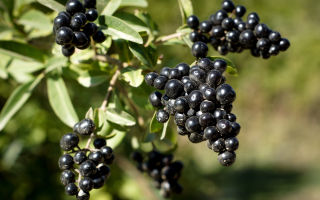Content
If you eat a wolfberry, you can get seriously poisoned, up to and including death. Therefore, it is important to know what inedible drupes look like, how they are dangerous, and whether they can be used with health benefits.
What poisonous plants are called wolf berries
Wolfberry is not a name for one plant, but for several at once. The most famous and widespread shrubs whose fruits are not suitable for consumption are:
- common belladonna, better known as belladonna;
- common honeysuckle;
- snowberry;
- raven eye;
- daphne;
- brittle buckthorn.

All of these shrubs have toxic properties, and poisoning is caused not only by the fruits, but also by their green parts.
Why is the wolfberry called that?
At first glance, it may seem that the wolfberry got its name due to the fact that it is eaten by wolves. But in reality this is not the case, the name has a symbolic meaning. In the old days, the wolf was considered the personification of evil, treachery and death, therefore, outwardly harmless, but very dangerous drupes were called wolf, that is, "evil."
What wolf berries look like
In order to accurately recognize poisonous drupes when they meet, it is necessary to familiarize yourself with the descriptions of all toxic plants bearing this name. You should also find out exactly what dosages of different fruits pose a real danger, what color the berries are, and where they can and cannot be found.
What color is a wolfberry
Since several drupes of completely different cultures are hidden under the general name, the color of the wolf berries can be very different. They come in bright red, black, deep blue or purple, even white. To distinguish a wolfberry from an edible berry, it is necessary to correctly recognize the plant on which the drupe hangs.
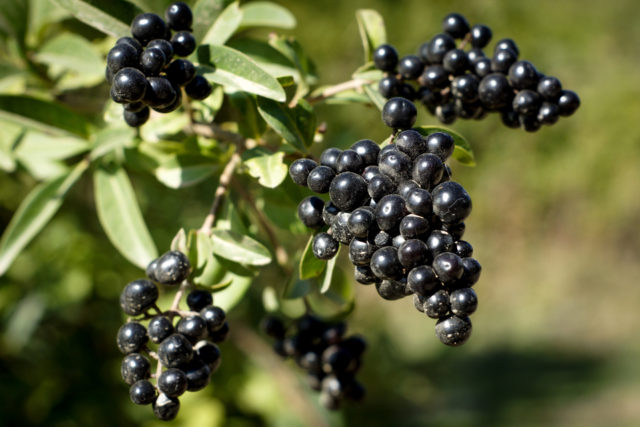
Where and how does wolfberry grow
The deadly poisonous berries are very widespread throughout the world. On the territory of Russia, they can be found in all regions, except for the desert regions and the Far North. In the world, poisonous plants with wolf berries grow throughout the Northern Hemisphere and in Asia.
The wolfberry usually grows both in illuminated and shaded areas, on dry and stony, wet and loose soils. Some of the shrubs can be found high in the mountains. Only regions with permafrost, deserts and extremely poor pebble soil are not suitable for wolf berries.
The most common types of wolf berries
The toxic berries, called wolf berries, grow on dozens of trees, shrubs, and perennial grasses. But it is customary to distinguish several types of plants, their fruits are mistaken for edible most often.
Daphne
The plant wolfberry or wolf bast, as well as daphne, is a low shrub of an evergreen type about 1.5 m tall with oblong dark green leaves. In spring, it blooms with white and pinkish small flowers, and in autumn it bears bright red oval fruits with a stone, slightly similar to barberry drupes. Moreover, the fruits do not sit on the stalks, but directly on the branches.
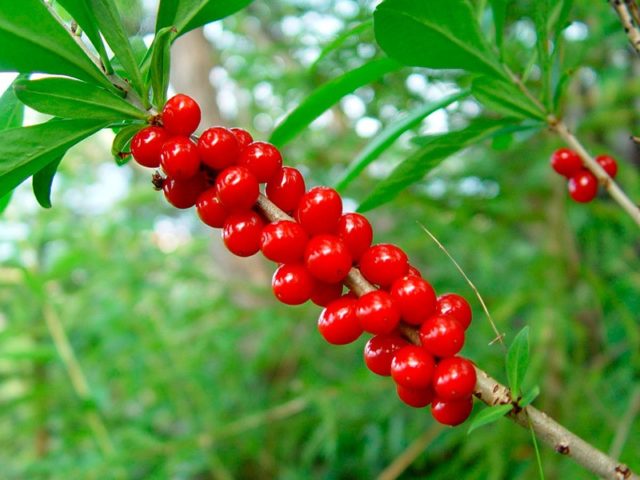
If more than 5 berries are consumed, it may be fatal. Contact with fresh plant sap causes skin burns and redness, as well as blisters and sores.
Raven eye
A perennial called crow's eye grows on a straight, thick stem up to 50 cm and usually has 4 large, light green leaves arranged in a cross shape. Above the leaves of the crow's eye in June or July, a green flower rises, consisting of four sepals and petals. In August, the raven eye bears a single fruit - black in color, with a bluish bloom.
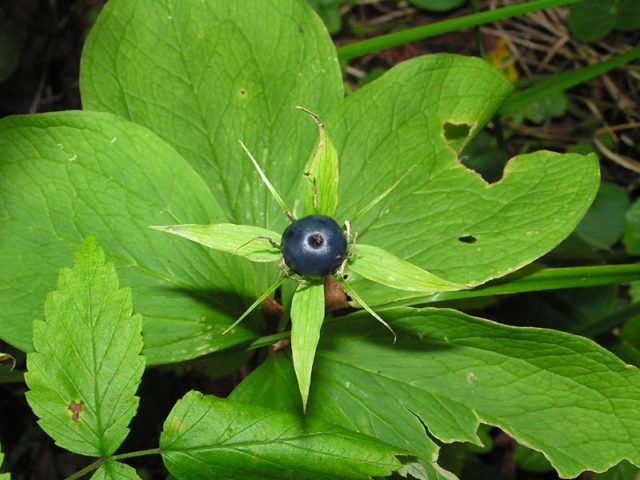
All parts of the raven eye are very hazardous to health and can cause fatal poisoning.
Common honeysuckle
An upright shrub grows up to 2.5 m tall. The plant can be recognized by its small bright green leaves up to 3 cm long, pale underneath. The shrub blooms in late May with yellow inflorescences, and in the middle of summer it bears fruit - red spherical drupes, which often grow together at the base.
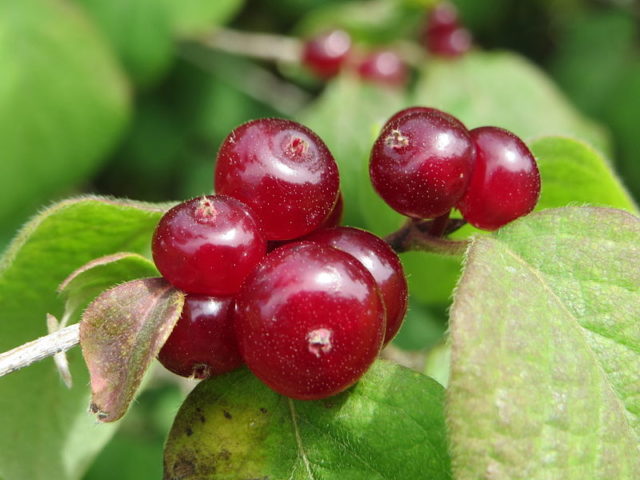
The fruits of the shrub are poisonous, although the plant itself is often planted in gardens as an ornamental crop.
Belladonna
The common belladonna, or belladonna, is a herbaceous perennial that can rise up to 1.5 m in height. The plant's stems are tall and straight, the leaves are ovate-oblong, light green or brownish green, lighter on the underside.
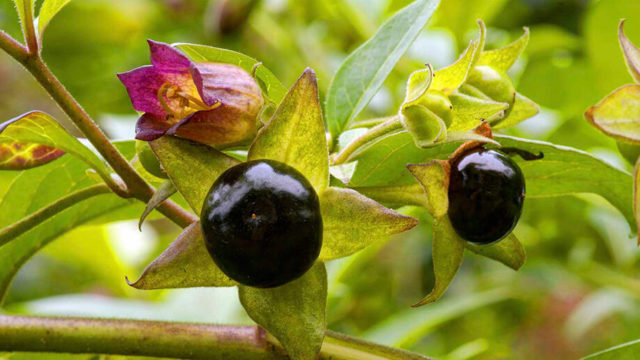
Belladonna blooms with brown-purple bells from May to autumn, from July it bears fruit - large shiny black berries with blue-purple juice and lots of seeds.
Snowberry
A deciduous shrub from the Honeysuckle family, it grows up to 3 m in height, has ovoid or oval-shaped leaves, dark green, with a solid edge. It blooms with pink inflorescences, and in early autumn white berries appear in their place. The fruits of the snowberry can be round or slightly flattened and elongated, inside them there are 1-3 seeds.
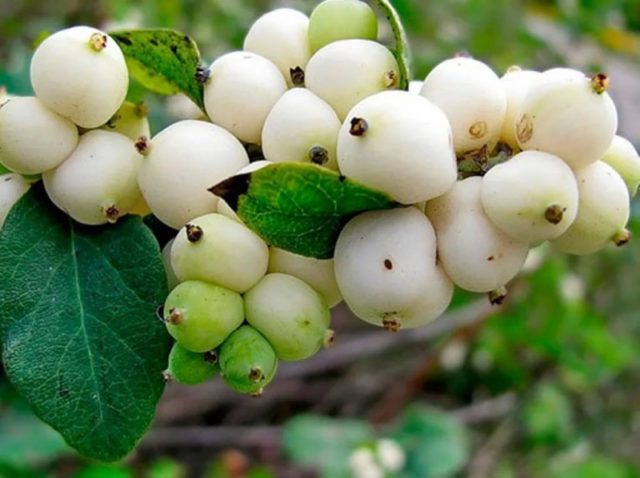
When consumed, the toxic substances in the berries irritate the mucous membranes and cause vomiting and burns.
Brittle buckthorn
An adult tree-like shrub is capable of reaching 7 m in height. The buckthorn trunk is smooth, covered with dark bark, the leaves are elliptical in shape with a solid edge. Buckthorn blooms with inconspicuous whitish flowers.
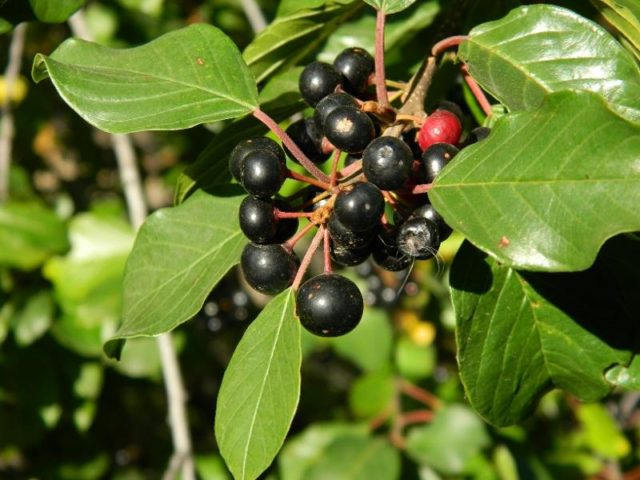
Despite the sweetish taste, buckthorn berries are inedible and poisonous, they lead to severe poisoning, and about 8 berries can be fatal.
What is the danger of wolf berries
Even a small portion of the fruit, which is often very attractive in appearance, can lead to severe poisoning. Wolf berries are dangerous in that they not only cause indigestion, but also inhibit all vital systems of the body due to toxic substances in their composition.
Why you can't eat wolf berries
Poisonous fruits contain the following compounds that pose an increased danger:
- saponins that irritate mucous membranes;
- meserein - a substance with a local irritant effect;
- daphnin, daphnetoxin and daphnein - toxins that interfere with blood clotting;
- oxycoumarins and atropines;
- xylosteine.
All of these substances threaten human life to one degree or another. Some of them disrupt the work of the digestive system, others have a negative effect on the heart rate and blood, and still others have a dramatically negative effect on the nervous system. Only a few fruits are enough for poisoning, and the symptoms develop very quickly.
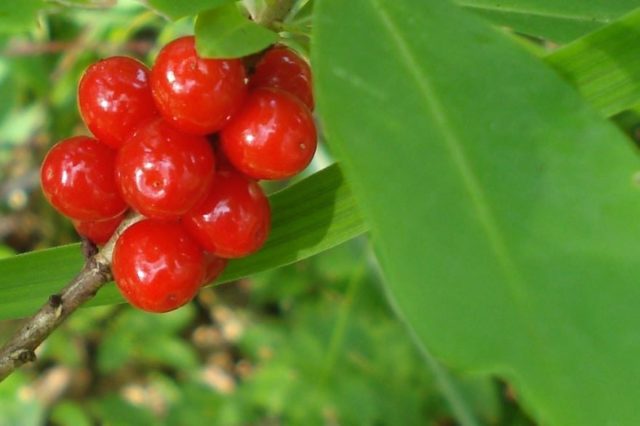
Signs of wolfberry poisoning
Among the main signs of poisoning are:
- nausea, diarrhea, and abdominal pain;
- headache and dizziness;
- fever and fever;
- blurred vision or temporary blindness;
- confusion and seizures.
When the poisonous berry juice comes into contact with the skin, burning and redness appear, sometimes blisters quickly appear.
Is it possible to die from wolfberry
Toxic drupes are dangerous precisely because, when consumed, they can cause fatal poisoning. 5 berries or more are considered a dangerous dosage.
What to do if you ate a wolfberry
First of all, it is necessary to give the patient plenty of water and induce vomiting. After cleansing the stomach, you must continue to drink, against the background of nausea and diarrhea, the body loses fluid.
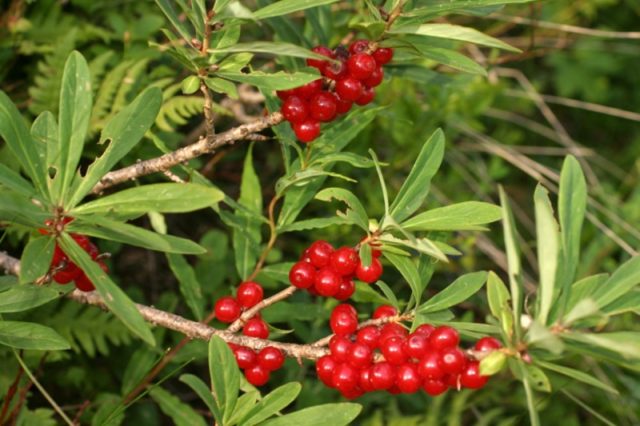
Then the patient must be laid down horizontally and an ambulance team must be called. It is impossible to wait out the poisoning at home.
Why is wolfberry useful?
Wolf berries also have beneficial properties. In minimal dosages, the poisons in their composition have a therapeutic effect and demonstrate laxative, antiseptic and anti-inflammatory properties.
The use of wolf berries in traditional medicine
In home treatment, wolf berries are allowed to be used for the following diseases:
- rheumatism and osteochondrosis;
- gout and arthritis;
- sore throats and colds;
- constipation and worms;
- skin diseases and inflammations.
Wolfberry works well against fungal and bacterial infections.
Wolfberry recipes for healing
Traditional medicine offers several recipes using wolf berries. Some products are intended for external use, others can be used internally, but strictly according to the algorithms given and with great care.
Rubbing for rheumatism
The components of wolfberry in miniscule doses improve blood circulation and relieve inflammation. For the treatment of rheumatism it is necessary:
- dry and grind the bark of the wolfberry;
- pour raw materials into a glass vessel in the amount of 2 small spoons;
- pour 500 ml of vodka and put it in a cool dark place for 2 weeks.
The ready-made tincture of a greenish-yellow color is filtered, and then twice a day is applied to the sore spot, without rubbing, with just a couple of short strokes. The remedy causes local blood flow, so pain and inflammation subside.
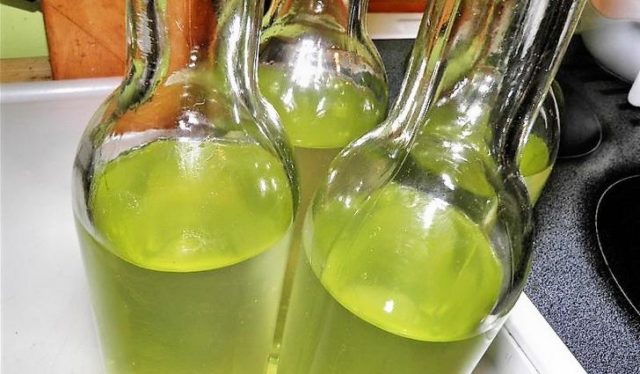
Toothache decoction
To relieve a toothache, you can use a decoction of dried wolfberry bark. They do it like this:
- 1 large spoonful of dry bark is chopped;
- pour 200 ml of boiling water and cover with a lid;
- stand for an hour, and then filter.
Then the broth must be diluted with clean water and rinsed out the mouth. The antiseptic properties of wolfberry bark will help eliminate the bacterial process and get rid of pain. After use, the broth must be spit out, it must not be swallowed.
Tincture of wolfberry for gout
With gout, patients most often complain of pain in the joints of the legs. Such remedy can bring relief:
- 3-5 liters of warm, but not hot water are poured into the basin;
- add a tincture of wolfberry to the liquid, at the rate of 1 large spoon per liter of water;
- for 7-10 minutes, lower the legs into the pelvis.
The bath will stimulate blood flow and help relieve joint pain. But after the procedure, you must definitely wash your feet with clean water and spread them with moisturizer to avoid skin irritation.
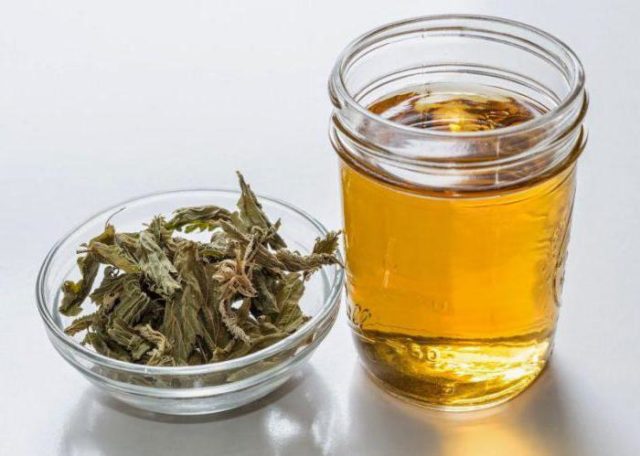
The use of wolf berries in everyday life
Shrubs and herbs with poisonous fruits are used not only in medicine, but also in everyday life. First of all, the plants are often used for decorative purposes in gardens, for example, the common honeysuckle or the snowberry look very attractive despite its dangerous properties. They are used as a hedge, in single and group plantings.
On the basis of wolf berries, solutions are prepared for spraying the garden from insect pests. It should be remembered that the treatment is carried out only in a respirator and protective clothing. During the fruiting period or directly during flowering, such spraying cannot be carried out.
Wolfberry juice is a good natural color. However, now it is not often used in this capacity, since artificial dyes are widespread.
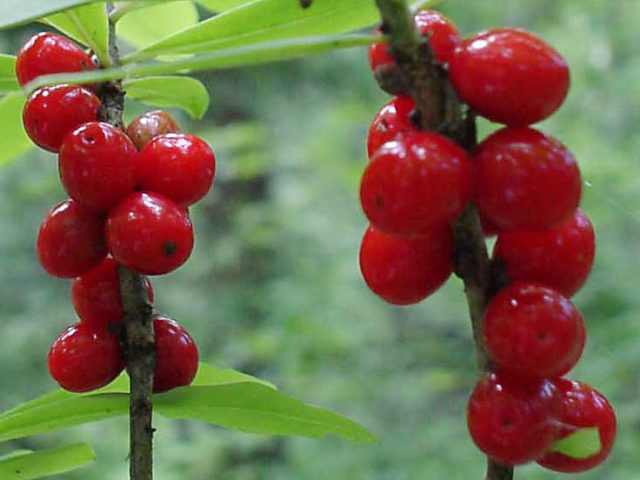
Conclusion
If you eat a wolfberry, you can get poisoned up to death. At the same time, the competent use of drupes in medicinal recipes can be beneficial for health, but the algorithms and dosages must be followed very carefully.

